1061 scholarly books by Catholic University of America Press and 18
start with U
1061 scholarly books by Catholic University of America Press and 18
1061 scholarly books by Catholic University of America Press
18 start with U start with U
18 start with U start with U
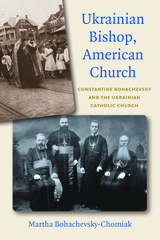
Ukrainian Bishop, American Church
Martha Bohachevsky-Chomiak
Catholic University of America Press, 2018
Constantine Bohachevsky was not a typical bishop. On the eve of his unexpected nomination as bishop to the Ukrainian Catholics in America, in March 1924, the Vatican secretly whisked him from Warsaw to Rome to be ordained. He arrived in America that August to a bankrupt church and a hostile clergy. He stood his ground, and chose to live а simple missionary life. He eschewed public pomp, as did his immigrant congregations. He regularly visited his scattered churches. He fought a bitter fight for the independence of the church from outside interference – a kind of struggle between the Church and the state, absent both. He refashioned a failing immigrant church in America into a self-sustaining institution that half a century after his death could help resurrect the underground Catholic Church in Ukraine, which became the largest Eastern Catholic church today. This trailblazing biography, based on recently opened sources from the Vatican, Ukraine and the United States, brings the reader from the placid life of the married Catholic Ukrainian clergy in the Habsburg Empire to industrial America.
[more]
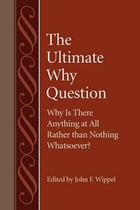
The Ultimate Why Question
Why Is There Nothing at All Rather than Nothing Whatsoever?
John F. Wippel
Catholic University of America Press, 2011
This volume gathers studies by prominent scholars and philosophers about the question how have major figures from the history of philosophy, and some contemporary philosophers, addressed "the ultimate why question": why is there anything at all rather than nothing whatsoever?
[more]
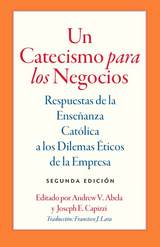
Un Catecismo para los Negocios
Andrew V. Abela
Catholic University of America Press, 2016
This second edition, translated into Spanish, streamlines some of the editing from the first addition, and more importantly, includes material from Pope Francis's encyclical, Laudato Si, and his apostolic exhortation, Evangelii Gaudium. A Catechism for Business presents the teachings of the Catholic Church as they relate to more than one hundred specific and challenging moral questions as they have been asked by business leaders. Andrew V. Abela and Joseph E. Capizzi have assembled the relevant quotations from recent Catholic social teaching as responses to these questions. Questions and answers are grouped together under major topics such as marketing, finance and investment. The book's easy-to-use question and answer approach invites quick reference for tough questions and serves as a basis for reflection and deeper study in the rich Catholic tradition of social doctrine.
[more]
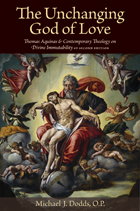
The Unchanging God of Love
Thomas Aquinas and Contemporary Theology on Divine Immutability (Second Edition)
Michael J. Dodds, O.P.
Catholic University of America Press, 2008
The Unchanging God of Love provides a clear and comprehensive account of what Aquinas really says about divine immutability, presented in a way that allows his theology to address contemporary criticisms
[more]
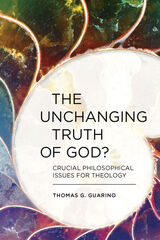
The Unchanging Truth of God? Crucial Philosophical Issues for Theology
Thomas G. Guarino
Catholic University of America Press, 2021
It has long been a cornerstone of Catholic belief that Christians can be intelligent and creative thinkers—inquisitive seekers after truth—as well as men and women of ardent faith. Catholics are entirely committed, then, to the claim that human rationality and religious faith are complementary realities since they are equally gifts of God.
But understanding precisely how faith and reason cohere has not always been a smooth path. At times, theology has allowed philosophy to become the leading (and baleful) partner in the faith-reason relationship, thereby lapsing into rationalism or relativism. At other times, theology has been tempted by fideism, with philosophy now regarded as little more than a pernicious intruder corrupting Christian faith, life and thought.
The essays in this volume display how Catholicism understands the proper confluence between philosophy and theology, between human rationality and Christian faith, between the natural order and supernatural grace. To illustrate these points, the book draws on a long line of Christian thinkers: Origen, Augustine, Anselm, Aquinas and, in our own day, Fides et Ratio of John Paul II and the Regensburg Address of Benedict XVI.
How is theology always a “Jewgreek” enterprise—to borrow a term from Jacques Derrida—always a combination of the biblical (Hebraic) and philosophical (Hellenic) traditions? Why is one particular element of philosophy, metaphysics, essential for the intelligibility and clarity of Catholic theology? Why is this so much the case that John Paul II could state emphatically: “a philosophy which shuns metaphysics would be radically unsuited to the task of mediation in the understanding of Revelation”?
But theology cannot simply be about dialogue with philosophers of yesteryear. Theology must constantly incorporate fresh thinking and remain in lively conversation with an extensive variety of contemporary perspectives. This book displays how reciprocity and absorption has been characteristic of theology’s past and must represent its future as well.
[more]
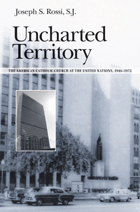
Uncharted Territory
The American Catholic Church at the United Nations, 1946-1972
Joseph S. Rossi S.J.
Catholic University of America Press, 2006
Uncharted Territory chronicles the groundbreaking attempt by the National Catholic Welfare Conference (NCWC) to mold the United Nations in the image of a Catholic world order through the NCWC Office for UN Affairs.
[more]
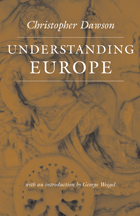
Understanding Europe (The Works of Christopher Dawson)
Christopher Dawson
Catholic University of America Press, 2009
In Understanding Europe, Dawson expresses a desire for Europe to rediscover and renew its foundational Christian sources in order to recover a deeper sense of integrity.
[more]
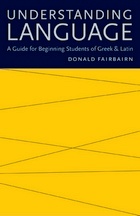
Understanding Language
A Guide for Beginning Students of Greek and Latin
Donald Fairbairn
Catholic University of America Press, 2011
Understanding Language includes major sections on the noun and verb systems of the classical languages.
[more]
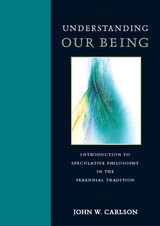
Understanding Our Being
Introduction to Speculative Philosophy in the Perennial Tradition
John W. Carlson
Catholic University of America Press, 2008
Written as an undergraduate textbook, Understanding Our Being treats central topics about our knowledge of being, the being of the natural world, and, via the latter, being as such
[more]
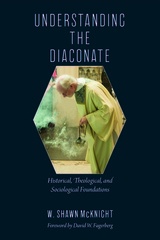
Understanding the Diaconate
Historical, Theological, and Sociological Foundations
W. Shawn McKnight
Catholic University of America Press, 2018
What is a deacon? More than fifty years since the restoration of the permanent diaconate by the Second Vatican Council, the office of deacon is still in need of greater specificity about its purpose and place within the mission and organizational structure of the Church. While the Church is more than a social reality, the Church nonetheless has a social reality. Our understanding of the diaconate therefore benefits from a theological discussion of the divine element of the Church and a sociological examination of the human element. Understanding the Diaconate adds the resources of sociology and anthropology to the theological sources of scripture, liturgy, patristic era texts, theologians, and magisterial teachings to conclude that the deacon can be understood as “social intermediary and symbol of communitas” who serves the participation of the laity in the life and mission of the Church. This research proposes the deacon as a servant of the bond of communion within the Church (facilitating the relationship between the bishop/priest and his people), and between the People of God and the individual in need. Thus authentic diaconal ministry includes a vast array of many concrete contexts of pastoral importance where one does more than simply serve at Mass.
[more]
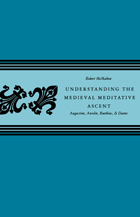
Understanding the Medieval Meditative Ascent
Augustine, Anselm, Boethius and Dante
Robert McMahon
Catholic University of America Press, 2006
Understanding the Medieval Meditative Ascent uses literary analysis to discover new philosophical meanings in these works. Clearly written in nontechnical language, its account of their literary structures and of the hidden meanings they generate will inform nonspecialist and specialist alike.
[more]
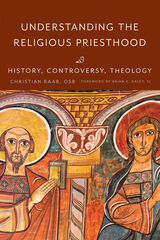
Understanding the Religious Priesthood
History, Controversy, Theology
Christian, OSB Raab
Catholic University of America Press, 2020
Most contemporary theologies of Holy Orders consider priesthood mainly in its diocesan context and most contemporary theologies of religious life do not consider how ordained ministry functions when it is internal rather than external to religious life. Understanding the Religious Priesthood provides a history and theology of religious priesthood that contributes to our understanding of this vocation’s identity and mission. It uncovers what religious priesthood shares with diocesan priesthood and non-ordained religious life and what makes it different from both those other vocations.
Christian Raab begins by tracing the history of religious priesthood from its origins in the early Church to the eve of the Second Vatican Council. He demonstrates that religious priests often faced questions about how to reconcile their two callings, but that they also provided answers in their theologies and spiritualities of priesthood and religious life. Meanwhile, they made key contributions to the Church’s life and mission. Raab then investigates the teachings of the Second Vatican Council on priesthood and religious life. Observing that the Council presented priesthood according to a diocesan typology and presented religious life without sacerdotal associations, he argues that the lack of imagery of religious priesthood contributed to a post-conciliar vocational identity crisis among religious priests. He then seeks to remedy this lacuna by appealing to the biblical images for religious priesthood Hans Urs von Balthasar offered in his theology of vocations. Raab argues that Balthasar’s imagery is a promising way forward for understanding the identity and mission of religious priesthood. In a final part, Raab provides a substantial theological articulation of religious priesthood which illuminates its liturgical signification, ecclesial mediation and mission, and ministerial identity. Here he draws not only from Balthasar but also from Pope John Paul II, Yves Congar, Jean-Marie Tillard, Brian Daley, and Guy Mansini to construct his profile.
[more]
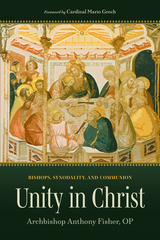
Unity in Christ
Bishops, Synodality, and Communion
Archbishop Anthony Fisher, OP
Catholic University of America Press, 2023
What does episcopal fraternity and communio look like? This central question is explored through the erudition and experience of Archbishop Anthony Fisher, Catholic Archbishop of Sydney, Australia. Unity in Christ, based upon a series of addresses given to the United States Conference of Catholic Bishops (USCCB) at their Special Assembly in 2022, delves into the themes associated with episcopal unity. By surveying the Christian tradition, beginning with the scriptures and then through various periods (Apostolic generation, patristic, scholastic, Vatican II, recent post Vatican II developments such as synodality) a coherent picture of episcopal togetherness is presented. What becomes clear is that unity among Christ’s disciples and their successors is not simply an ideal but rather a constitutive element of their office. They are called to love as Christ loved, expressed above all through genuine friendship with one another. The consequences of this fraternity and communio have implications in areas such as spirituality, preaching and fraternal correction, among others. This second feature, the implications of episcopal fraternity and communio, are explored through Archbishop Fisher’s twenty years of experience as a bishop of the Catholic Church. By providing concrete examples of lived episcopal fraternity and communio, Fisher offers a glimpse into both the challenges and fruits of living out Christ’s call that "they might all be one" (Jn 17:21).
[more]

The Unity of Faith
Essays for the Building Up of the Body of Christ
Thomas G. Weinandy
Catholic University of America Press, 2024
In this volume, The Unity of Faith: Essays for the Building Up of the Body of Christ, Thomas G. Weinandy, OFM, Cap., has compiled a theologically significant medley of essays. The title is taken from Ephesians 4:11–13 (“And his gifts were … for building up the body of Christ, until we all attain to the unity of the faith and of the knowledge of the Son of God….”). The “unity of faith” in this book refers both to the interrelation between the truths of the faith, whether
Trinitarian, Christological, or ecclesiological, and to unity among those who hold the faith.
The first section deals with the Trinity, usually with ecumenical questions in mind, ranging from the question of the filioque to the trinitarian thought of Johnathan Edwards. The second section
presents the author’s mature judgments in a topic for which Weinandy has become notable—the impassability of God and the human suffering of Christ. The third looks at other aspects of Christology with the help of patristic writers, but for sake of the contemporary theological milieu. For example, what is the relationship between the Incarnation and soteriology? What is the nature of Christ’s human consciousness and knowledge? How does Paul perceive the primacy of Christ within his Christological hymns?
The fourth section turns to the unity between faith and reason. In doing Catholic theology, how do theologians apply reason when contemplating the mysteries of faith? What is the philosophical and theological significance of Pope John Paul II’s encyclical, Fides et Ratio? The final section turns to the life of believers in the unity of faith, with topics such as Henri de Lubac’s contributions to ecclesiology, the sacramentality of the Catholic priesthood, the very
delicate issue of the need for conversion and the Jews in relationship to the Church, and the Christian family as a domestic church, taking up the roles of priest, prophet, and king. Weinandy invariably writes in a clear and engaging manner, so much so that these essays will
bring to the greater knowledge of God not only academics and students of theology, but also the educated laity.
[more]
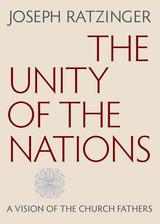
The Unity of the Nations
Joseph Ratzinger
Catholic University of America Press, 2015
What did ancient Christians and pagans believe makes the unity of the nations? Just as he began serving as a major adviser at the Second Vatican Council in 1962, Joseph Ratzinger (the future Pope Benedict XVI) studied this question in lectures delivered at Austria's University of Salzburg. These lectures, originally published in German, are now made available in English in this volume.
[more]
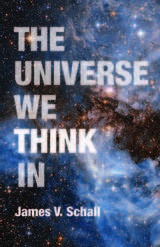
The Universe We Think In
James V. Schall
Catholic University of America Press, 2018
The Universe We Think In arises from a tradition of realism, both philosophical and political, a universe in which the common sense understanding of things is included in our judgement about them. The scope is both vast and narrow – vast because it
[more]
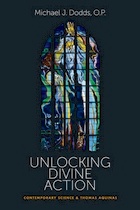
Unlocking Divine Action
Michael J. Dodds
Catholic University of America Press, 2012
Provides a sustained account of how the thought of Aquinas may be used in conjunction with contemporary science to deepen our understanding of divine action and address such issues as creation, providence, prayer, and miracles.
[more]
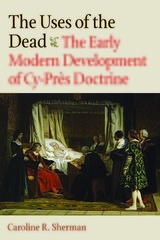
The Uses of the Dead
Caroline R. Sherman
Catholic University of America Press, 2017
Cy-près doctrine, which allows the purpose of a failing or impractical charitable gift to be changed, has been understood since the eighteenth century as a medieval canon law principle, derived from Roman law, to rescue souls by making good their last charitable intentions. The Uses of the Dead offers an alternate origin story for this judicial power, grounded in modern, secular concerns.
Posthumous gifts, which required no sacrifice during life, were in fact broadly understood by canon lawyers and medieval donors themselves to have at best a very limited relationship to salvation. As a consequence, for much of the Middle Ages the preferred method for resolving impossible or impractical gifts was to try to reach a consensus among all of the interested parties to the gift, including the donor's heirs and the recipients, with the mediation of the local bishop.
When cy-près emerged in the seventeenth century, it cut a charitable gift o from return to the donor's estate in the event of failure. It also gave the interested parties to the gift (heirs, beneficiaries, or trustees) little authority over resolutions to problematic gifts, which were now considered primarily in relationship to the donor's intent—even as the intent was ultimately honored only in its breach. The Uses of the Dead shows how cy-près developed out of controversies over church property, particularly monastic property, and whether it might be legally turned over to fund education, poor relief, or national defense.
Renaissance humanists hoped to make better, more prudent uses of property; the Reformation sought to correct superstitious abuses of property and ultimately tended to prevent donors' heirs from recovering secularized ecclesiastical gifts; and the early modern state attempted to centralize poor relief and charitable efforts under a more rational, centralized supervision. These three factors combined to replace an older equitable ideal with a new equitable rule—one whose use has rapidly expanded in the modern era to allow assorted approximations and judicial redistributions of property.
Posthumous gifts, which required no sacrifice during life, were in fact broadly understood by canon lawyers and medieval donors themselves to have at best a very limited relationship to salvation. As a consequence, for much of the Middle Ages the preferred method for resolving impossible or impractical gifts was to try to reach a consensus among all of the interested parties to the gift, including the donor's heirs and the recipients, with the mediation of the local bishop.
When cy-près emerged in the seventeenth century, it cut a charitable gift o from return to the donor's estate in the event of failure. It also gave the interested parties to the gift (heirs, beneficiaries, or trustees) little authority over resolutions to problematic gifts, which were now considered primarily in relationship to the donor's intent—even as the intent was ultimately honored only in its breach. The Uses of the Dead shows how cy-près developed out of controversies over church property, particularly monastic property, and whether it might be legally turned over to fund education, poor relief, or national defense.
Renaissance humanists hoped to make better, more prudent uses of property; the Reformation sought to correct superstitious abuses of property and ultimately tended to prevent donors' heirs from recovering secularized ecclesiastical gifts; and the early modern state attempted to centralize poor relief and charitable efforts under a more rational, centralized supervision. These three factors combined to replace an older equitable ideal with a new equitable rule—one whose use has rapidly expanded in the modern era to allow assorted approximations and judicial redistributions of property.
[more]
READERS
Browse our collection.
PUBLISHERS
See BiblioVault's publisher services.
STUDENT SERVICES
Files for college accessibility offices.
UChicago Accessibility Resources
home | accessibility | search | about | contact us
BiblioVault ® 2001 - 2024
The University of Chicago Press









